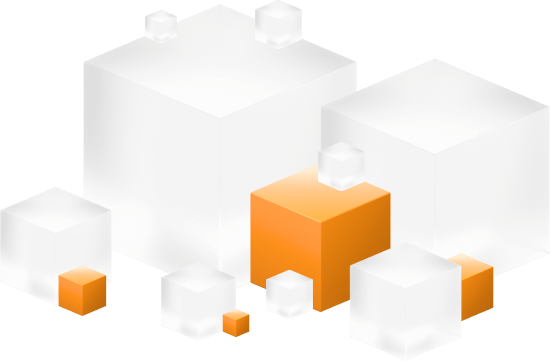Jaccard Similarity is a widely-used metric for measuring the similarity between two sets, with applications in machine learning, computational genomics, information retrieval, and more. Jaccard Similarity, also known as the Jaccard index or Jaccard coefficient, is a measure of the overlap between two sets. It is calculated as the ratio of the intersection of the sets to their union. This metric has found applications in various fields, including machine learning, computational genomics, information retrieval, and others. Recent research has focused on improving the efficiency and accuracy of Jaccard Similarity computation. For example, the SuperMinHash algorithm offers a more precise estimation of the Jaccard index with better runtime behavior compared to the traditional MinHash algorithm. Another study proposes a framework for early action recognition and anticipation using novel similarity measures based on Jaccard Similarity, achieving state-of-the-art results in various datasets. In the field of computational genomics, researchers have developed methods for hypothesis testing using the Jaccard/Tanimoto coefficient, enabling the incorporation of probabilistic measures in the analysis of species co-occurrences. Additionally, the Bichromatic Closest Pair problem, which involves finding the most similar pair of sets from two collections, has been studied in the context of Jaccard Similarity, with hardness results provided under the Orthogonal Vectors Conjecture. Practical applications of Jaccard Similarity include medical image segmentation, where metric-sensitive losses such as soft Dice and soft Jaccard have been shown to outperform cross-entropy-based loss functions when evaluating with Dice Score or Jaccard Index. Another application is in privacy-preserving Jaccard Similarity computation, where the PrivMin algorithm provides differential privacy guarantees while retaining the utility of the computed similarity. A notable company case study is GenomeAtScale, a tool that combines the communication-efficient SimilarityAtScale algorithm with tools for processing input sequences. This tool enables accurate Jaccard distance derivations for massive datasets using large-scale distributed-memory systems, fostering DNA research and large-scale genomic analysis. In conclusion, Jaccard Similarity is a versatile and widely-used metric for measuring the similarity between sets. Its applications span various fields, and ongoing research continues to improve its efficiency, accuracy, and applicability to new domains. As a result, Jaccard Similarity remains an essential tool for data analysis and machine learning tasks.
Machine Learning Terms: Complete Machine Learning & AI Glossary
Dive into ML glossary with 650+ Machine Learning & AI terms. Understand concepts from ‘area under curve’ to ‘large language models’. More than a list - our ML Glossary is your key to the industry applications & latest papers in AI.
0% Spam,
100% Lit!
Jensen-Shannon Divergence (JSD) is a measure used to quantify the difference between two probability distributions, playing a crucial role in machine learning, statistics, and signal processing. Jensen-Shannon Divergence is a powerful tool in various machine learning applications, such as Nonnegative Matrix/Tensor Factorization, Stochastic Neighbor Embedding, topic models, and Bayesian network optimization. The success of these tasks heavily depends on selecting a suitable divergence measure. While numerous divergences have been proposed and analyzed, there is a lack of objective criteria for choosing the optimal divergence for a specific task. Recent research has explored different aspects of Jensen-Shannon Divergence and related divergences. For instance, some studies have introduced new classes of divergences by extending the definitions of Bregman divergence and skew Jensen divergence. These new classes, called g-Bregman divergence and skew g-Jensen divergence, exhibit properties similar to their counterparts and include some f-divergences, such as the Hellinger distance, chi-square divergence, alpha-divergence, and Kullback-Leibler divergence. Other research has focused on developing frameworks for automatic selection of the best divergence among a given family, based on standard maximum likelihood estimation. These frameworks can be applied to various learning problems and divergence families, enabling more accurate selection of information divergence. Practical applications of Jensen-Shannon Divergence include: 1. Document similarity: JSD can be used to measure the similarity between two documents by comparing their word frequency distributions, enabling tasks such as document clustering and information retrieval. 2. Image processing: JSD can be employed to compare color histograms or texture features of images, facilitating tasks like image segmentation, object recognition, and image retrieval. 3. Anomaly detection: By comparing the probability distributions of normal and anomalous data, JSD can help identify outliers or unusual patterns in datasets, which is useful in fraud detection, network security, and quality control. A company case study involving Jensen-Shannon Divergence is the application of this measure in recommender systems. By comparing the probability distributions of user preferences, JSD can help identify similar users and recommend items based on their preferences, improving the overall user experience and increasing customer satisfaction. In conclusion, Jensen-Shannon Divergence is a versatile and powerful measure for quantifying the difference between probability distributions. Its applications span various domains, and recent research has focused on extending its properties and developing frameworks for automatic divergence selection. As machine learning continues to advance, the importance of understanding and utilizing Jensen-Shannon Divergence and related measures will only grow.